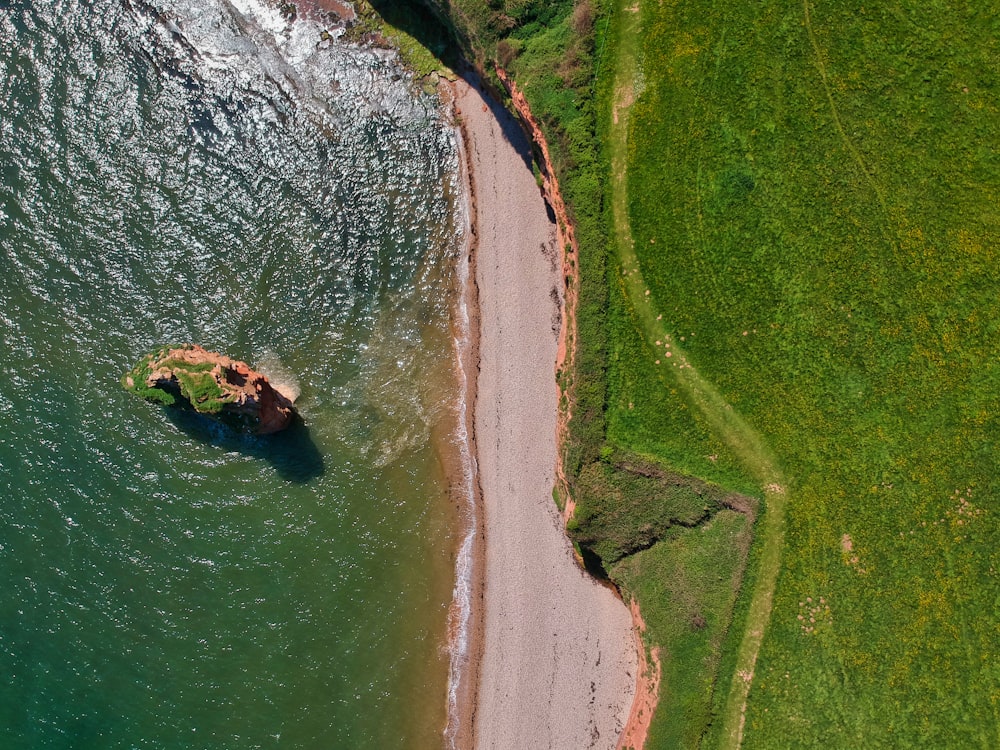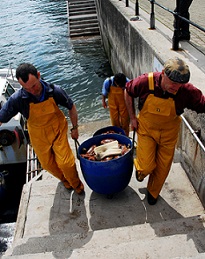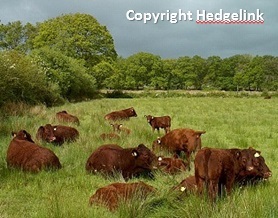
Devon Local Nature Partnership has a complimentary role to work with the LEP to help grow a green economy. You can find out more about how this is being achieved through the Natural Capital page of this website.
However, in Devon, the surrounding ecosystems already provide varied and critical services for Devon.
Click on the drop-downs below to explore some of the amazing examples of ecosystem services.
More information on this topic can be found in the People and Economy section of Devon’s State of Environment report.
Ecosystem services in Devon
-
Coast
Devon has 42 beaches with Blue Flag status. Surfing from north Devon beaches is estimated to be worth £52 million per year to the local economy.
The Jurassic Coast is the only natural World Heritage Site in England. The East Devon stretch of the site attracts around 650,000 staying visitors and 2.5 million day visitors each year, spending over £250 million.
The South West Coast Path is the UK’s most popular National Trail and is listed as one of the world’s greatest walks by Lonely Planet. In 2011 over 2 million people used the Devon section, spending over £132 million.
-
Marine
Lyme Bay has been identified as a UK marine biodiversity hotspot. Its reefs support rare species such as the sunset cup coral. Commercial fishing within just the Torbay Marine Conservation Zone generates almost £1 million a year in landings, while recreational activities generate around £1.6 million a year.
Brixham is the largest fishing port in England in terms of the value of landings, £22 million a year.
People living less than 1 km from the sea are more likely to consider themselves in good health than people living further away.
-
Landscapes
Devon’s coasts, countryside, and moors, along with the rich cultural and historic heritage of our towns and countryside, underpin our tourism economy and attract inward investment offering a desirable place to live, work and visit. According to a 2014 visitor survey, the scenery/landscape (69%) and beaches/sea (61%) were the most popular reasons for respondents choosing to visit Devon.
The 6 million people attracted to visit Devon every year contribute over £2 billion to our economy, more than any other county in the southwest.
Our two National Parks and five Areas of Outstanding Natural Beauty are a main attraction for tourists. For example, Dartmoor National Park contributed £520 million to the local economy in 2009. The South West Coast Path attracts 3.2 million visitors every year to Devon alone, contributing an estimated £157 million to the county economy. In a 2012 visitor survey, ‘Attractive views and scenery’ was the number one factor for people when considering a walk.
The tranquillity, beauty and contact with nature that Devon’s landscapes offer, support our health and well-being, particularly our mental health. Defra recognise these as ‘cultural ecosystem services’ but essentially it’s about our own individual responses to places and how they make us feel. Beautiful places feed our soul- which is priceless and not easy to translate into monetary value.
-
Nectar Networks
Flower rich areas on farmland, road verges, gardens, parks and schools all provide an important source of nectar and pollen for Devon’s bees and other pollinators. To replace pollination services provided by bees nationally would cost farmers around £1.8 billion a year in labour and pollen alone.
-
Access
Devon has 3,200 miles of public rights of way and over 86,000 hectares of accessible natural green space (largely Open Access Land). The health and welfare benefits of the UK’s green spaces is £30 billion a year.
Developers are willing to pay 3% more for commercial property near to open space.
-
Farmland
Agriculture is still a dominant sector in Devon, with a workforce of approximately 25,000. Agriculture and food production accounts for 13% of Devon’s economy compared to 7.6% nationally. The way we manage our rural landscapes determines much of the countryside scenery we enjoy. Our rural landscapes support a thriving food and drink sector that is synonymous with Devon’s outstanding environmental quality.
The Working Wetlands programme, part of Upstream Thinking, has drawn down £7.7 million of agri-environment funding in the past six years to support local farmers across north Devon.
-
Hedges and Woodland
Devon has approximately 77,600 hectares of woodland and 53,000km of hedges, as well as around 20% of all the species rick hedges in the UK. A study of the wood fuel industry showed that the value of wood fuel production in Devon could grow by £4 million between 2010 and 2020.
Devon’s woodlands account for 4,500 full time equivalent jobs and contribute £200 million to the local economy.
The value of public access benefits to UK woodland is estimated to be £447 million a year.
-
Rivers
Devon has 3,500km of river habitats, which supports a wealth of wildlife, including an internationally important otter population. Devon’s 13 salmon rivers support some of the best salmon fishing in the UK. The River Dart is internationally renowned for water sports.
-
Wetlands
South West Water is investing £9.1 million in ‘Upstream Thinking’ between 2010 and 2015. Funding in Devon is helping to restore upland bogs and wet culm grasslands, which act as sponges within the landscape and help to clean and regulate our water supplies. These wetlands are beneficial to rare species such as the Marsh Fritillary butterfly.
 Devon has 42 beaches with Blue Flag status. Surfing from north Devon beaches is estimated to be worth £52 million per year to the local economy.
Devon has 42 beaches with Blue Flag status. Surfing from north Devon beaches is estimated to be worth £52 million per year to the local economy.
 Lyme Bay has been identified as a UK marine biodiversity hotspot. Its reefs support rare species such as the sunset cup coral. Commercial fishing within just the Torbay Marine Conservation Zone generates almost £1 million a year in landings, while recreational activities generate around £1.6 million a year.
Lyme Bay has been identified as a UK marine biodiversity hotspot. Its reefs support rare species such as the sunset cup coral. Commercial fishing within just the Torbay Marine Conservation Zone generates almost £1 million a year in landings, while recreational activities generate around £1.6 million a year.

 Flower rich areas on farmland, road verges, gardens, parks and schools all provide an important source of nectar and pollen for Devon’s bees and other pollinators. To replace pollination services provided by bees nationally would cost farmers around £1.8 billion a year in labour and pollen alone.
Flower rich areas on farmland, road verges, gardens, parks and schools all provide an important source of nectar and pollen for Devon’s bees and other pollinators. To replace pollination services provided by bees nationally would cost farmers around £1.8 billion a year in labour and pollen alone.
 Devon has 3,200 miles of public rights of way and over 86,000 hectares of accessible natural green space (largely Open Access Land). The health and welfare benefits of the UK’s green spaces is £30 billion a year.
Devon has 3,200 miles of public rights of way and over 86,000 hectares of accessible natural green space (largely Open Access Land). The health and welfare benefits of the UK’s green spaces is £30 billion a year.

 Devon has approximately 77,600 hectares of woodland and 53,000km of hedges, as well as around 20% of all the species rick hedges in the UK. A study of the wood fuel industry showed that the value of wood fuel production in Devon could grow by £4 million between 2010 and 2020.
Devon has approximately 77,600 hectares of woodland and 53,000km of hedges, as well as around 20% of all the species rick hedges in the UK. A study of the wood fuel industry showed that the value of wood fuel production in Devon could grow by £4 million between 2010 and 2020.
 Devon has 3,500km of river habitats, which supports a wealth of wildlife, including an internationally important otter population. Devon’s 13 salmon rivers support some of the best salmon fishing in the UK. The River Dart is internationally renowned for water sports.
Devon has 3,500km of river habitats, which supports a wealth of wildlife, including an internationally important otter population. Devon’s 13 salmon rivers support some of the best salmon fishing in the UK. The River Dart is internationally renowned for water sports.
 South West Water is investing £9.1 million in ‘Upstream Thinking’ between 2010 and 2015. Funding in Devon is helping to restore upland bogs and wet culm grasslands, which act as sponges within the landscape and help to clean and regulate our water supplies. These wetlands are beneficial to rare species such as the Marsh Fritillary butterfly.
South West Water is investing £9.1 million in ‘Upstream Thinking’ between 2010 and 2015. Funding in Devon is helping to restore upland bogs and wet culm grasslands, which act as sponges within the landscape and help to clean and regulate our water supplies. These wetlands are beneficial to rare species such as the Marsh Fritillary butterfly.